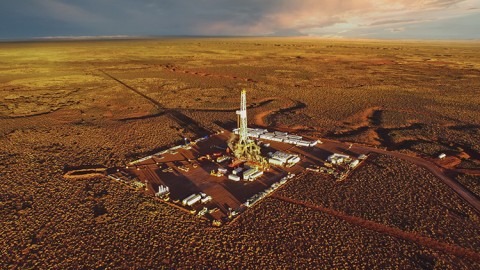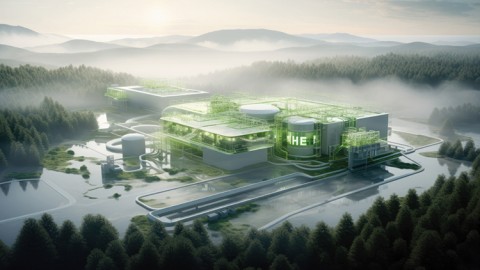One of the most difficult issues of this century is to provide more energy with minimum environmental effect. Substituting coal and diesel with natural gas may assist in addressing this challenge by lowering emissions and improving air quality. Gas is also a good asset for renewable energy sources, enabling to balance supply and demand for wind, solar, and hydroelectricity. Natural gas is also critical in sectors of the economy that are complex to electrify, such as industrial operations and cargo handling.
General Overview
Natural gas’s adaptability is one of the keys to its predicted major position in the energy transition since it can be used as a fuel source in all industries, including heating, cooking, and industrial uses. Natural gas enjoys a major advantage over coal in terms of greenhouse gas emissions, emitting around half of the CO2 amount. This makes it a compelling alternative for short-term carbon reduction while stabilizing the road to renewables. As suggested by an industry expert in natural gas operations, “People [from outside the oil and gas industry] will usually think that anything that is not renewable like solar or wind is harmful or not clean energy. The main point of using natural gas is not to replace other oil and gas sources or renewable energy technologies, the main point is to make a bridge between both sources on our journey to a more green or clean environment without any change in efficiency.”
Additionally, natural gas is also commonly touted as an energy transition catalyst due to its crucial position in the scaling up in terms of the production and transportation of hydrogen, which the European Union and others have projected would play a vital part in a prospective climate-neutral market. According to the EU’s hydrogen strategy, while the cost of manufacturing ‘clean hydrogen’, produced solely from renewable power is decreasing, it remains rather expensive. The EU policy involves the progressive production of what is now referred to as clean hydrogen, first including hydrogen from natural gas.
Nevertheless, after three years of stagnation, global energy-related CO2 emissions increased in 2017 and 2018, indicating a serious misalignment with global climate targets. It is evident that switching from unchecked usage of fossil fuels does not provide a long-term solution to climate change, but there can be large CO2 and air quality gains from utilizing less emissions-intensive fuels in certain nations, industries, and timeframes.
Benefits and Challenges
As the globe begins to migrate away from fossil fuels, many see natural gas as a transition source to a sustainable energy future. Thus, what are the benefits and drawbacks of natural gas? Natural gas, as a high-capacity energy supply, is quickly becoming the preferred power source for countries with expanding economies and rising electricity demands.
One of the reasons for the increased demand for natural gas is that it is a plentiful natural resource. According to the International Energy Agency (IEA), there are enough recoverable natural gas resources to last approximately 2 centuries. Natural gas resources have been discovered all over the world, enabling extraction and supply simpler, possibly keeping costs low as long as the appropriate infrastructure is there.
Furthermore, although burning natural gas emits greenhouse gases, it emits the least amount of carbon emissions of any fossil fuel, hence it causes less contamination. This, along with its high energy production, makes it a perfect bridge fuel. As a result, it is the natural successor to coal and petroleum. Because of its minimal carbon footprint, it is an appealing power source for both established and emerging societies.
On the other hand, natural gas emits less carbon than other fossil fuels. It is, nevertheless, still a fossil fuel. Except under extremely rare conditions, natural gas is not renewable. In any case, it emits more CO2 than green energy. This is why it is used as a bridge fuel. It bridges the gap between the retirement of bigger fossil fuel facilities and the widespread use of renewable energy.
In addition, natural gas may be extracted in a variety of techniques, the most prevalent of which is fracking. Injecting water into a subsurface gas deposit to bring it closer to the surface is known as fracking. It has been connected to a variety of serious health problems, environmental degradation, and huge methane releases. While new initiatives promote a transition towards a more sustainable extraction procedure, fracking remains a cheap and popular sourcing choice.
To conclude, the environmental justification for developing new gas infrastructure is difficult, as authorities must be cautious about sealing in gas-related emissions while reducing coal-related emissions. If new gas infrastructure prohibits the burning of more harmful fuels, absolute emissions may increase but relative emissions may decrease. In other cases, a new gas network may also offer services that low-carbon options cannot, such as peak winter heating, seasonal preservation, or high-temperature heat for industrial. The accessibility and implementation of carbon capture, utilization, and energy storage is a crucial component for both gas and coal.








